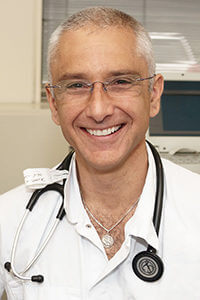Stopping heart attacks before they occur
The difficulty with primary prevention of heart attacks is that it deals with risk. Primary prevention is the term we use in medicine to describe the process of commencing treatment BEFORE an event has occurred. (Secondary prevention is AFTER an event has occurred, aiming to reducing likelihood of further events.)
For some, I believe our current risk assessment (primary prevention) practice could be re-evaluated. By using the latest advances in technology to scan the heart, we can be ahead of the game in risk management. Today’s CT imaging of the heart offers us an ability to evaluate the health of an individual’s arteries before the onset of a problem. This is a paradigm shift in the conventional management of coronary artery disease. To understand this better it is necessary to consider the individual within the population.
Imagine an average 50-year-old man:
Historically, when our 50-year-old male visits the doctor for a cardiac risk assessment, his risk factor characteristics are entered into a risk calculator. Such characteristics include cholesterol level, blood pressure, smoking status and so on. The risk calculator is then read. The patient may be told he has a risk of 10% in 10 years. This doesn’t sound too bad, about 1% per year. Remember though, this is based on POPULATION data that tells us that 10 men out of 100 with the same risk factor characteristics will have a cardiac event. The trouble is, what if our man is one of the 10 INDIVIDUALS that do have an event? ! ?
We forget that the probability relates to the RATE OF EVENT IN 100 MEN and this is a very different thing to the ACTUALITY, the actuality will be an event rate of 100% for 10 of the men or zero% for the remainder.
So, what should be said to our average 50 year old man is; “in a population of 100 men just like you, we would expect 10 to have a cardiac event over the next ten years, and to be honest we don’t know right here and right now if you are one of the 10 or one of the 90”…perhaps a more honest way to describe the role of the risk calculator, but less reassuring.
Enter imaging the heart:
What if we could take those 100 men with a 10% risk and put them through a scan that can look at their heart arteries and tell us if they have lots of build up of plaque in the arteries, negligible build up of plaque in the arteries or something in-between. Would this be useful? It sounds obvious doesn’t it?
Well the technology is available. It is cardiac CT imaging. (Using a CAT scan to take pictures of the beating heart). It is not currently widely used and the drive for its use is by interested patients and doctors with an interest in prevention. Of course nothing is that simple, there are things to consider. The test is currently not part of a medical guideline for risk assessment, so not covered by the government. It is not for everyone, it may not be suitable for people with very high risk or who are young.
Though it is not straight forward, it is still worth a conversation for most patients to discuss with their doctor if the technology would be appropriate and answer important questions for them. Patients require this background information on the use of cardiac CT to have an informed conversation with their doctor about what is best for them, as an individual, not just be treated as part of the population.
 | Kindly contributed by Dr Warrick Bishop, cardiologist and author. |
Dates
Tags
Created by:

 Login
Login














